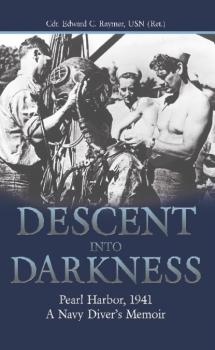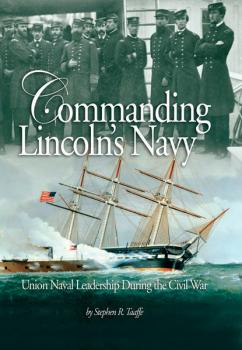ТОП просматриваемых книг сайта:
ЛИТМИР - LITMIR.BIZ - Электронная библиотека
Скачивание или чтение онлайн электронных книг.Аннотация
“Wheel books” were once found in the uniform pockets of virtually all junior officers and many senior petty officers. Each small notebook was unique to the Sailor carrying it, but all had in common a collection of data and wisdom that the individual deemed useful in the effective execution of his or her duties. Often used as a substitute for experience among neophytes and as a portable library of reference information for more experienced personnel, those weathered pages contained everything from the time of the next tide, to leadership hints from a respected chief petty officer, to the color coding of the phone-and-distance line used in underway replenishments.In that same tradition, the Naval Institute has created and aptly named the Wheel Book series, portable libraries culled from USNI’s vast array of information that has accumulated for more than a century. Articles from the Institute’s flagship publication Proceedings are combined with selections from USNI’s oral history program and from Naval Institute Press books to create unique guides on a wide array of relevant professional subjects.Just as the “wheel books” of yesterday served the fleet well, the Naval Institute Wheel Books of today provide supplemental information, pragmatic advice, and cogent analysis on topics important to modern naval professionals. The pinnacle of leadership in a military organization is command. Article 0801 of Navy Regulations defines both the authority and the responsibility of command as “absolute.” This Naval Institute Wheel Book provides practical guidance and food for thought that actual and would-be commanders can use to carry out that absolute authority while being absolutely responsible. Included in this specially-selected collection is the sage advice of those who have commanded as well as the expectations of those who are commanded. Aspirants as well as practitioners will do well to exploit this selected survey of what Fleet Admiral Chester Nimitz described as the “one purpose” for entering the Navy.
Аннотация
Operation MH/CHAOS was the code name for a domestic espionage project conducted by the Central Intelligence Agency in the late1960s and early 1970s. MH/CHAOS: The CIA’s Campaign Against the Radical New Left and the Black Panters is an insider’s account of the CIA’s Counterintelligence Staff’s Special Operations Group first charged by Presidents Lyndon Johnson and later by Richard Nixon to find foreign intelligence, terrorist, organizations or government contacts, controlling or influencing Anti-Vietnam War activists or American black extremists protesting, bombing and carrying out other anti-government, unlawful or illegal activities in the United States. The operation was launched under Director of Central Intelligence Richard Helms, by chief of counter-intelligence, James Jesus Angleton, and headed by Richard Ober. The program's goal was to unmask possible foreign influences on the student antiwar movement. The «MH» designation signified that the program had a worldwide area of operations. When President Nixon came to office in 1969, all of the existing domestic surveillance activities were consolidated into Operation MH/CHAOS and used CIA stations abroad to report on antiwar activities of United States citizens traveling abroad, employing methods such as physical surveillance and electronic eavesdropping, utilizing «liaison services» in maintaining such surveillance. The operations were later expanded to include 60 officers. In 1969, following the expansion, the operation began developing its own network of informants for the purposes of infiltrating various foreign antiwar groups located in foreign countries that might have ties to domestic groups. Eventually, CIA officers expanded the program to include other leftist or counter-cultural groups with no discernible connection to Vietnam, such as groups operating within the women's liberation movement, including Students for a Democratic Society, the Black Panther Party and Women Strike for Peace. Also targeted was the Israeli embassy, and domestic Jewish groups such as the B'nai B'ritht. As a result of the Watergate break-in, involving two former CIA officers, Operation MH/CHAOS was discontinued. The secret nature of the program was exposed by Seymour Hersh in the New York Times on December 22, 1974. The following year, further details were revealed during Representative Bella Abzug's House Subcommittee on Government Information and individual Rights. The government, in response to the revelations, launched the Commission on CIA Activities Within the United States (The Rockefeller Commission), lead by then Vice President Nelson Rockefeller, to investigate the depth of the surveillance. In MH/CHOAS, the author, who is a former CIA officer, refutes the charges made by the New York Times and the Washington Post at the time that this domestic spying program first made headlines, and takes issue with conclusions of the Rockefeller Commission and the Church Committee. He relates how the Special Operations Group began, was staffed and how it was transformed into an anti-terrorist unit before it ceased operation. Rafalko details the information that Special Operations Group collected against the New Left and Black extremists and makes the case that the MHCHAOS program was justified, why the CIA was the logical agency to conduct the collection, and the consequences suffered later by American counterintelligence because of these investigations.
Аннотация
Sergeant Major Devaney’s They Were Heroes presents moving portraits of warriors who have not been fully celebrated. His stories recognize the heroism of those who fought in these deadly conflicts and placed their lives at risk to assure the safety of their fellow Marines. For these Marines, no Medal of Honor is enough for their bravery. Nonetheless, though not his main purpose, Devaney calls attention to the practice of awarding medals itself, that often these warriors received awards that were below what their deeds merited. No less disturbing is the revelation that medals were often awarded by rank, and not always by action. The lives presented in Devaney’s book call attention to the fact that many heroes of these deadly conflicts have gone unrecognized.
Аннотация
On December 7, 1941, as the great battleships Arizona, Oklahoma, and Utah lie paralyzed and burning in the aftermath of the Japanese attack on Pearl Harbor, a crack team of U.S. Navy salvage divers headed by Edward C. Raymer are hurriedly flown to Oahu from the mainland. The divers have been given a Herculean task: rescue the sailors and Marines trapped below, and resurrect the pride of the Pacific fleet.Now for the first time, the chief diver of the Pearl Harbor salvage operations, Cmdr. Edward C. Raymer, USN (Ret.), tells the whole story of the desperate attempts to save crewmembers caught inside their sinking ships. Descent into Darkness is the only book available that describes the raising and salvage operations of sunken battleships following the December 7th attack.Once Raymer and his crew of divers entered the interiors of the sunken shipwrecks—attempting untested and potentially deadly diving techniques—they experienced a world of total blackness, unable to see even the faceplates of their helmets. By memorizing the ships’ blueprints and using their sense of touch, the divers groped their way hundreds of feet inside the sunken vessels to make repairs and salvage vital war material. The divers learned how to cope with such unseen dangers as falling objects, sharks, the eerie presence of floating human bodies, and the constant threat of Japanese attacks from above.Though many of these divers were killed or seriously injured during the wartime salvage operations, on the whole they had great success performing what seemed to be impossible jobs. Among their credits, Raymer’s crew raised the sunken battleships USS West Virginia, USS Nevada, USS California, After Pearl Harbor they moved on to other crucial salvage work off Guadalcanal and the sites of other great sea battles.
Аннотация
This study examines the transformation of the United States Navy as a fighting organization that took place on the North Atlantic Station between 1874 and 1897. At the beginning of this period, the warships assigned to this station were collectively administered by a rear-admiral, but were operationally deployed as individual units, each of whose actions were directed by their captains. By 1897 the North Atlantic, or “Home” Squadron as it was known, was a group of warships constituting a protean battle fleet – that is, an organized body moving and fighting in close-order, which meant that the actions of the captains were directed by a commanding admiral. The process of the development of an American battle fleet resulted in the construction of a new organizational identity for the North Atlantic Squadron. This process was as critical as the eventual outcome. It was not linear, but one in which progress in critical areas was modulated by conflicting demands that caused distraction. From 1874-1888, exercises in fleet tactics under steam were carried out sporadically utilizing existing wooden cruising vessels. From 1889-1894, the last wooden cruisers were decommissioned and the Squadron consisted entirely of new steel warships. Ad-hoc concentrations of vessels for purposes besides exercise and training retarded the continued development of doctrine and tactics necessary for a multi-ship fighting capability during this time. However, much work was done to develop a concept of multi-ship operations. From 1895-1897, the identity of the North Atlantic Squadron as a combat unit solidified. Tactical exercises were held that had specific offensive and defensive wartime applications. These exercises were necessary to develop a combat capability. The results of this study demonstrate that the United States government had an interest in developing an offensive naval combat capability as early as the 1870’s. Based on the record of the North Atlantic Squadron, it is argued that imperial aspirations, in the sense of possessing a capability to restrict the actions of other great powers in the Caribbean region, existed prior to the War of 1898. However, the process of change often resulted in the appearance of capability without the rigorous exercise necessary to possess it.
Аннотация
If the U.S. Marines gave birth to a legend in the halls of Montezuma in the nineteenth century, they added glorious luster to it with their heroism and victories against the Japanese in World War II. For this vivid, foxhole view of the Marines' war, Richard Wheeler draws extensively on frontline eyewitness accounts of Marines and combat journalists and backs up their stories with official U.S. action reports and captured Japanese materials. First published in 1983, the book has earned praise as a popular, one-volume history of all the battles fought by the Marine Corps in the Pacific campaign. The book describes in fascinating and exciting detail the heroic defense of Wake Island against an overwhelming enemy assault force. It traces the long bloody battle for Guadalcanal that brought the Marines their first victory and gave America and its allies control of the strategically important Soloman Islands. It follows the painful, island-by-island counterattack toward the Japanese homeland when the Marines created new legends at such places as Bougainville, Saipan, Tarawa, Guam, Iwo Jima, and Okinawa. Here are the remarkable exploits of the Marines holding off Japanese assault waves at Heartbreak Ridge, storming across coral reefs, and struggling up the slopes of Mount Suribachi to raise the Stars and Stripes. Some sixty-five photographs enhance the book, which is now available in paperback for the first time.
Аннотация
The Union Navy played a vital role in winning the Civil War by blockading Confederate ports, cooperating with the Union Army in amphibious assaults, and controlling the Mississippi River and its tributaries. President Lincoln understood, however, that the Navy was not as important, militarily and politically, to the war effort as the Army, so he delegated authority to his Secretary of the Navy, Gideon Welles, who divided the Navy into six squadrons and hand-picked their commanders. This book examines Welles selections and why he appointed them. While noting that the officers records, character, and abilities were of primary importance, Taaffe acknowledges that political connections, seniority, and availability were also factored into the selections. He demonstrates that Welles appointments improved markedly as the war continued and as he gained a better understanding of the Navy and its officer corps. Taaffe contends that Welles eventual success in picking effective squadron commanders contributed greatly to Union victory.
Аннотация
This biography covers David Glasgow Farragut’s long career in the navy before the Civil War. He was about sixty years old when that war began, and had accordingly lived through that long transitional period from sail to steam. As a lad he had served with Porter in the Essex on her glorious cruise which ended in bloody defeat at Valparaiso; he had repeatedly cruised in the Mediterranean; he hunted pirates in the Caribbean and had almost died of yellow fever; he had become familiar with the coast of Mexico and was present when the French bombarded the Castle of San Juan de Ulloa at Vera Cruz; he had often cruised into Buenos Aires, Montevideo, and Rio de Janeiro when revolution and anarchy threatened those cities; he had been on a man-of-war at Charleston when nullification threatened the union; he had participated in the Mexican War; he had established the Mare Island Navy Yard; and he commanded the steam sloop of war Brooklyn. Meanwhile he had slowly risen up the ladder of promotion from midshipman to captain, then the highest rank in the United States Navy.
Аннотация
Saying that no generation of Americans has produced a finer array of combat commanders than that of World War II, a thirty-year army veteran examines combat leadership throughout the war at every level of command in the U.S. Army. The author argues that although Army chief of staff George C. Marshall's organization and training policies were indispensable, the ultimate victory was the result of spirited leadership and the undaunted courage of those who served, from individual riflemen to the upper echelons of army command. Rather than a history of battles and campaigns, this book is an analysis of leadership in combat over three continents and across two oceans. It looks at how soldiers react in war – how sergeants, lieutenants, captains, and generals direct soldiers in the most intense of all human dramas. The first part focuses on the generals and takes a thematic approach, examining such topics as restoring the fighting spirit and analyzing the unique characteristics required to command special units in combat. The second part examines a special breed of junior leaders who fought the German and Japanese armies on the front lines and whose contributions merit attention. Like war correspondent Ernie Pyle, Kingseed includes both the big and the little to offer a balanced view of what makes a good combat leader.
Аннотация
The splashdown and recovery of Apollo 11 on 24 July 1969 was a historic event, which fulfilled President John F. Kennedy s national goal of placing a man on the moon and returning him safely to earth by the end of the 1960s. This book tells the dramatic story of the USS Hornet s recovery of the astronauts after the splashdown of their command module. This detailed account draws not only on historical records but also on the memories of eighty men who served aboard the Hornet and participated in the recovery operation, including Navy UDT frogman John M. Wolfram, who was the first to reach the Apollo II astronauts. Their inside account offers deck-level perspectives of events and includes details never before documented for the public. Their stories reveal that although the recovery operation looked easy and uneventful, there were many problems to overcome. For example, a machinist s mate had to repair a broken propeller shaft while the ship was underway so the Hornet could reach the point of splashdown on time; storms forced the ship to navigate by dead reckoning placing it miles away from its destination just minutes before Apollo came down; and a HS-4 helicopter narrowly avoided colliding with the command module due to heavy cloud cover. Yet, according to the author, the VIPs on the Hornet never suspected anything amiss. In addition to these behind-the-scenes stories, the book includes a never before published photograph of the Apollo 11 command module as it splashed down in the Pacific Ocean. Previously known only to those associated with the Navy SEAL who took the photo, the author established its authenticity through interviews with those on the helicopter and those who processed the photograph on the Hornet. Other photographs not previously released to the public, including surface-level photos taken by UDT swimmers during the recovery procedure are also among the illustrations displayed in the book.










